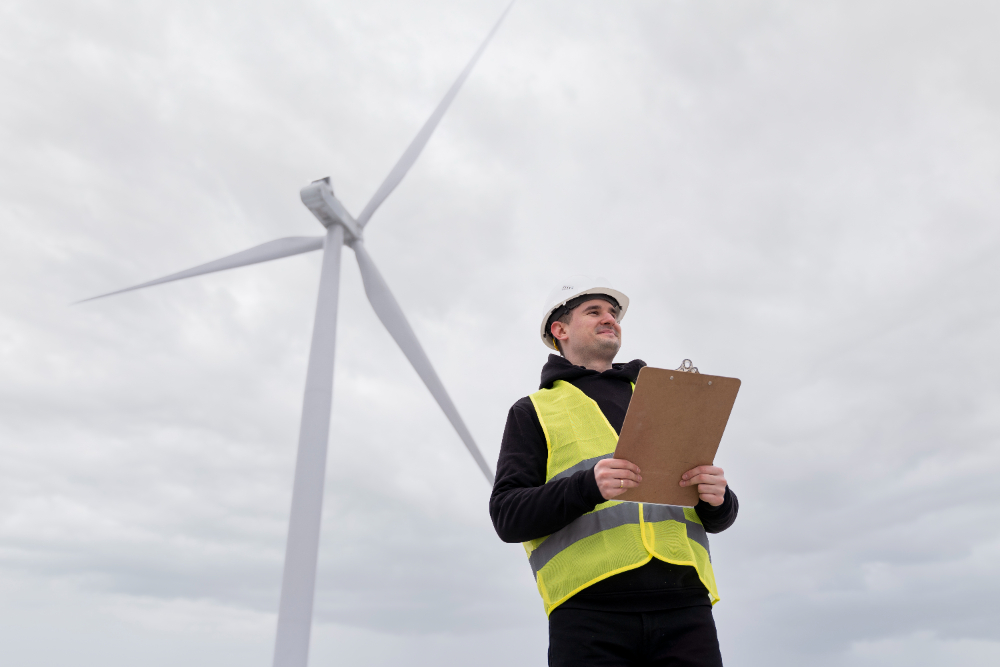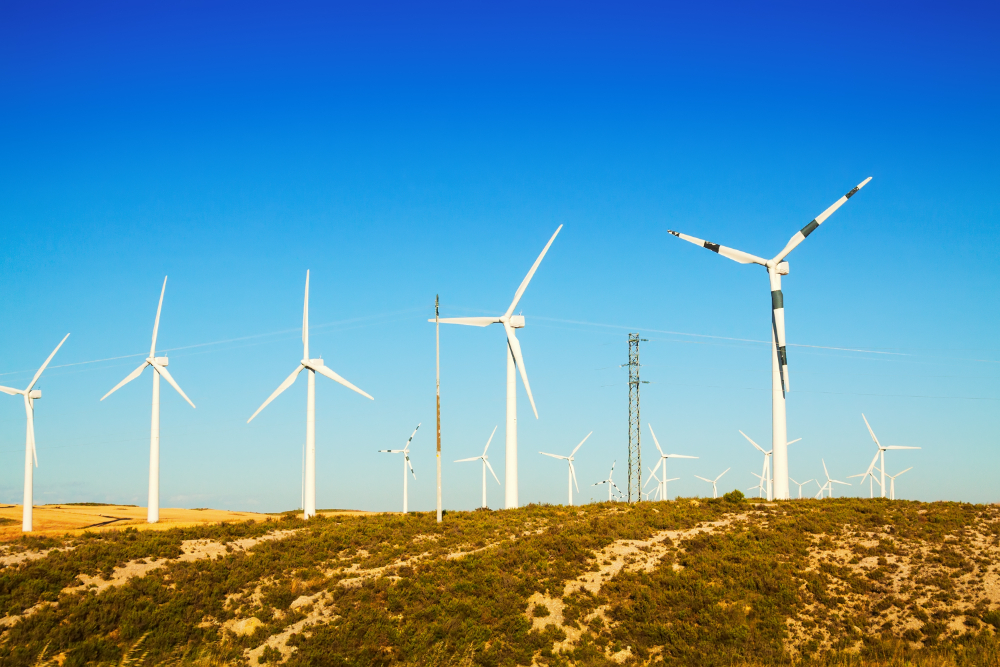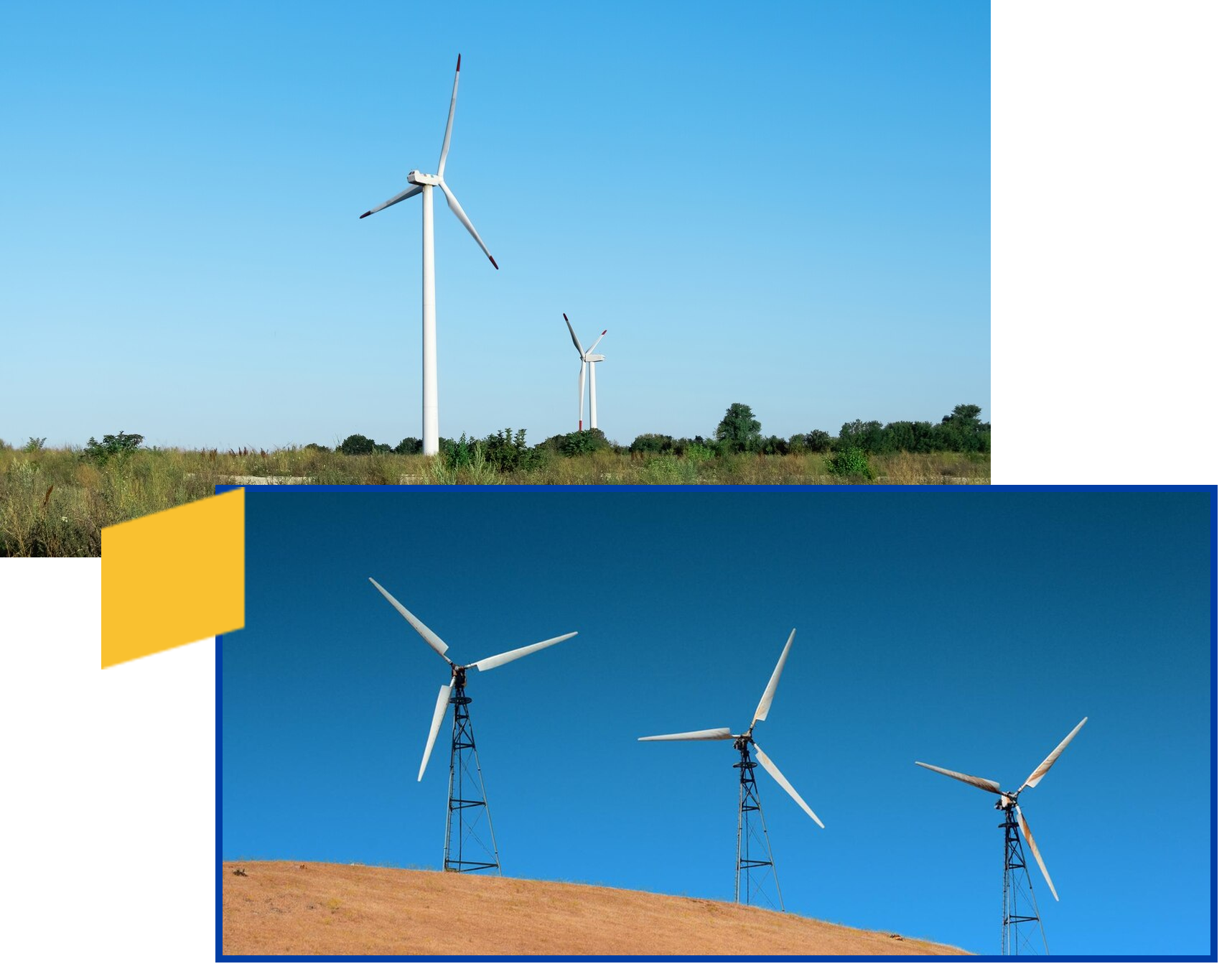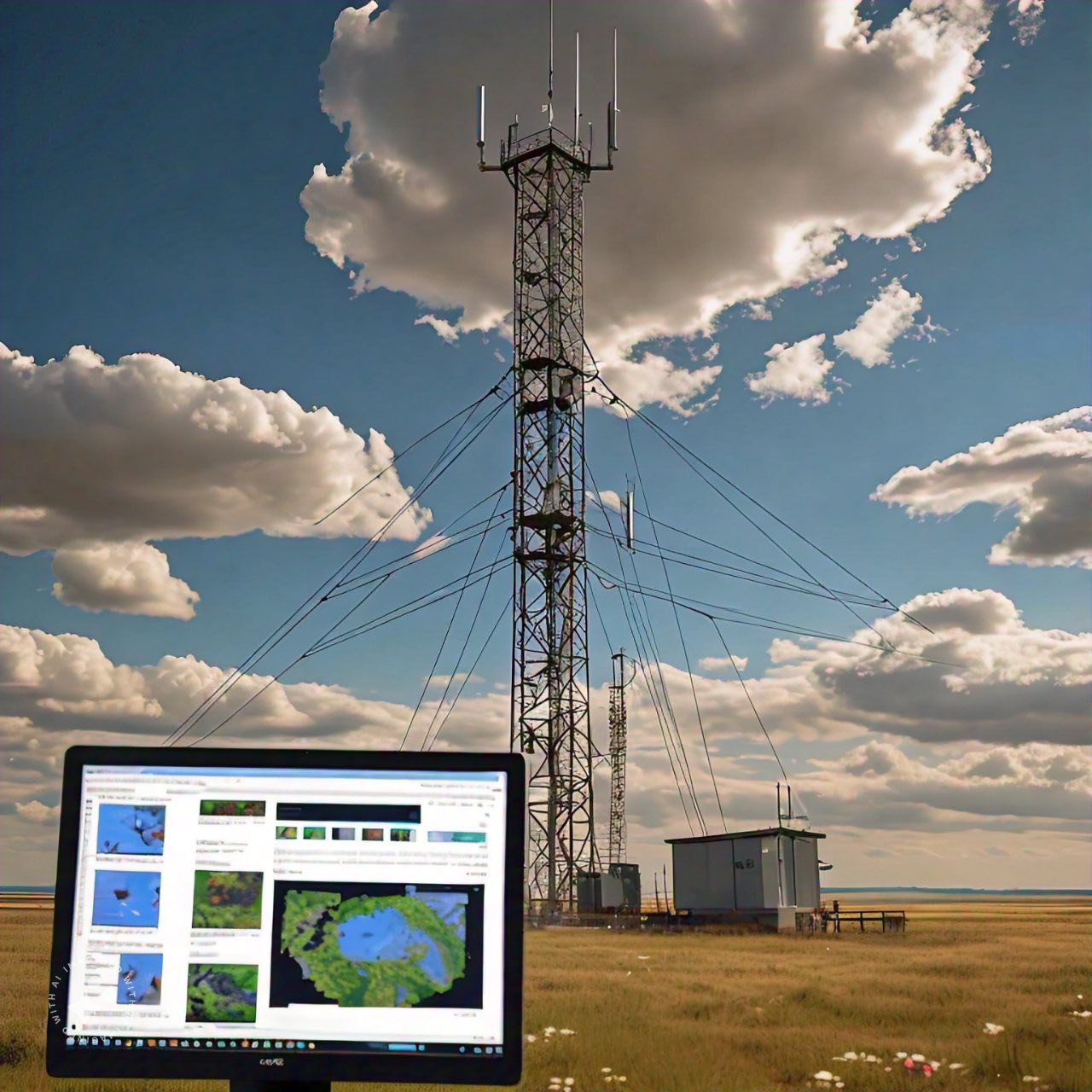THE POWER OF WIND
Harnessing the Wind, Powering a Sustainable Future
In the pursuit of harnessing wind power, E-Tech Asia Builders Corporation specializes in advanced measurement and assessment technologies to support wind energy projects.
- Wind LiDAR Installation: We deploy cutting-edge LiDAR systems to provide accurate, real-time data on wind speed and direction, ensuring optimal site selection and energy yield predictions.
- Meteorological Mast Installation: Our team installs and maintains met masts equipped with state-of-the-art sensors for comprehensive wind resource assessment.
Why Choose Us?
- Commitment to Quality: Every project is executed with meticulous attention to detail and adherence to international standards.
- Customer-Centric Approach: We prioritize customer satisfaction by offering personalized solutions and exceptional after-sales service.
- Sustainability Focus: Our solutions help clients reduce their carbon footprint and contribute to a greener future.

Join us in shaping a sustainable future with reliable, renewable energy solutions. Contact E-Tech Asia Builders Corporation today and discover how we can help you harness the power of the sun and wind.

Precision. Reliability. Innovation.
Wind LiDAR Solutions Powered by Solar Technology
At E-Tech Asia Builders Corporation, we specialize in delivering comprehensive wind LiDAR (Light Detection and Ranging) solutions tailored for remote and off-grid locations. With extensive experience and expertise in wind energy assessment, we combine cutting-edge technology with sustainable power systems to ensure accurate, reliable data collection—no matter where your project is located.
Empowering the Future with Wind Energy Solutions
Our Expertise in Wind LiDAR Installation
E-Tech Asia Builders Corporation has successfully executed numerous wind LiDAR installations across challenging terrains and remote areas, demonstrating our ability to adapt and innovate. Our team understands the complexities of wind resource assessment and ensures that every project is executed with precision and efficiency.
- Remote Site Capability: Our installations are designed to function independently, powered by solar energy, making them ideal for locations far from the electrical grid.
- Tailored Solutions: We carefully assess each site’s unique conditions to design and deploy custom LiDAR systems optimized for maximum data accuracy.
- Seamless Integration: By integrating solar power systems with Starlink internet connectivity, we ensure continuous operation and real-time data monitoring from even the most remote sites.

WHY HAVE LIDAR
Empowering Renewable Energy with Cutting-Edge Precision
Unlock the full potential of renewable energy with our Solar and Wind LiDAR solutions. Whether it’s optimizing solar energy production or capturing precise wind data, our advanced LiDAR systems provide unmatched accuracy and efficiency. Ideal for site assessments, resource management, and system optimization, these technologies empower you to make data-driven decisions for sustainable energy success.
Accurate Roof Measurements
LiDAR provides precise measurements of roof dimensions, pitch, and angles, ensuring optimal panel placement and system design.
Shading Analysis
LiDAR data accurately identifies shading from trees and nearby structures, allowing for optimized panel placement to maximize energy production.
Reduced Site Visits
LiDAR eliminates the need for extensive site visits, saving time and resources during the design phase.
Improved Project Accuracy
LiDAR data significantly enhances the accuracy of solar system design, leading to more reliable energy production estimates.
Wind Meteorological (Met) Mast Installation in the Philippines
-
Overview of Wind Meteorological Mast Installation
A Wind Meteorological Mast (Met Mast) is a tall structure equipped with instruments to measure and collect wind data. It serves as a critical component for assessing wind energy potential for utility-scale or small-scale wind projects. In the Philippines, where renewable energy is key to sustainable development, a thorough understanding of the principles, guidelines, and requirements is essential for successful installation.
-
Purpose of Met Mast Installation
- Wind Resource Assessment: Collect wind speed, direction, temperature, and pressure over a certain period (usually 1–2 years) to determine the feasibility of wind power projects.
- Energy Yield Estimation: Analyze collected data to estimate the annual energy production (AEP) of a wind farm.
- Site Suitability Analysis: Evaluate whether the location meets specific criteria for wind turbine placement.

-
Key Principles of Met Mast Installation
3.1 Site Selection
- Wind Potential: Choose sites with good wind flow, typically in elevated areas, ridgelines, coastal regions, or wind corridors.
- Topography: Avoid obstacles (e.g., trees, hills, buildings) that may affect wind flow or create turbulence.
- Accessibility: Ensure access for equipment, materials, and crew during installation and maintenance.
- Grid Connectivity: Consider proximity to the power grid for eventual turbine connection.
- Permitting: Secure all necessary permits in compliance with national and local regulations.
3.2 Design and Height
- Height: The mast height typically ranges between 60m to 120m, depending on turbine hub height and project requirements. A taller mast ensures accurate wind data at future hub levels.
- Measurement Levels: Install instruments at multiple levels (e.g., 60m, 80m, 120m) to capture wind shear and variations.
- Design: Use lattice-type or tubular masts with guy wires for stability.
3.3 Instruments and Sensors
The Met Mast is equipped with the following instruments:
- Anemometers: Measure wind speed at different heights.
- Wind Vanes: Measure wind direction.
- Temperature Sensors: Measure ambient temperature.
- Barometers: Measure atmospheric pressure.
- Data Loggers: Collect, store, and transmit wind data.
- Solar Radiation Sensors (optional): For projects integrating solar and wind.
3.4 Structural Stability
- Guy Wires: Properly tension guy wires to stabilize the mast against wind loads.
- Foundation Design: Install secure concrete or steel foundations based on soil conditions.
- Wind Loading Calculations: Follow structural design standards for wind resistance (refer to local building codes like the National Structural Code of the Philippines (NSCP)).
-
Philippine Context: Regulatory Framework and Compliance
4.1 Legal and Regulatory Framework
In the Philippines, wind energy development is governed by several laws and guidelines:
- Renewable Energy Act of 2008 (RA 9513): Promotes and incentivizes renewable energy projects.
- Philippine Grid Code: Ensures compliance with grid interconnection standards.
- DENR Environmental Impact Assessment (EIA): Required for large-scale wind projects.
- Local Government Units (LGU) Permits: Securing clearances from barangay, municipal, or provincial levels.
4.2 Site Permitting and Documentation
- Secure the following permits before installation:
- Landowner agreements or right-of-way permits.
- DENR clearance (Environmental Compliance Certificate, if required).
- Barangay and LGU permits.
- Safety and structural design certifications.
-
Installation Process
- Pre-Installation Planning
- Conduct a feasibility study and detailed site assessment.
- Secure permits and approvals.
- Identify equipment, mast design, and instrument specifications.
- Site Preparation
- Clear and level the site.
- Mark foundation locations for mast legs and guy wire anchors.
- Transport materials and instruments to the site.
- Foundation Installation
- Build concrete or steel anchors for the mast and guy wires.
- Allow sufficient curing time for concrete foundations.
- Met Mast Assembly and Erection
- Assemble the mast in sections on the ground.
- Use cranes, winches, or pulley systems to raise the mast.
- Secure guy wires at pre-determined anchor points and tension accordingly.
- Instrument Installation and Calibration
- Install anemometers, wind vanes, and sensors at designated heights.
- Calibrate all instruments as per international standards (IEC 61400-12).
- Testing and Commissioning
- Verify sensor data transmission through data loggers.
- Perform a stability and safety check of the mast structure.
- Operation and Monitoring
- Continuous monitoring of wind data and equipment performance.
- Routine maintenance of instruments, guy wires, and structural components.
-
Best Practices
- Compliance with International Standards: Follow the IEC 61400-12 standard for wind measurement and Met Mast installation.
- Safety First: Use proper safety gear and follow safety protocols during installation (e.g., harnesses, helmets).
- Data Quality Assurance: Regularly calibrate sensors to maintain data accuracy.
- Redundancy: Install duplicate sensors at critical heights to avoid data loss.
-
Challenges and Solutions in the Philippines
Challenges
Typhoons and Extreme Weather
Solutions
Use typhoon-resistant designs; secure guy wires and anchors.
Challenges
Accessibility in Remote Areas
Solutions
Use portable, modular mast designs.
Challenges
Permitting Delays
Solutions
Early coordination with LGUs and government agencies.
Challenges
Data Loss Due to Equipment Failure
Solutions
Install redundant sensors and periodic maintenance.
Challenges
Community and Environmental Concerns
Solutions
Conduct stakeholder consultations and comply with DENR guidelines.
-
Wind Resource Potential in the Philippines
The Philippines has significant wind potential, particularly in regions like:
- Ilocos Norte
- Batanes
- Palawan
- Mindoro
- Guimaras
- Northern Samar
Wind speeds in these areas range from 6 m/s to 10 m/s, making them ideal for wind farm development.
-
Conclusion
Installing a Wind Met Mast in the Philippines involves detailed planning, compliance with national regulations, and adherence to international standards for wind measurement. By following proper site selection, design principles, and safety protocols, wind developers can obtain accurate data to harness the country’s rich wind energy potential. With the Philippines’ commitment to renewable energy, the installation of Met Masts is a vital step toward a cleaner, more sustainable energy future.
Key References for Further Study
- Renewable Energy Act of 2008 (RA 9513)
- IEC 61400-12: Wind Resource Measurement
- National Structural Code of the Philippines (NSCP)
- DENR Environmental Impact Assessment Guidelines
- DOE Wind Energy Roadmap
- Philippine Atmospheric, Geophysical and Astronomical Services Administration (PAGASA)- wind data




